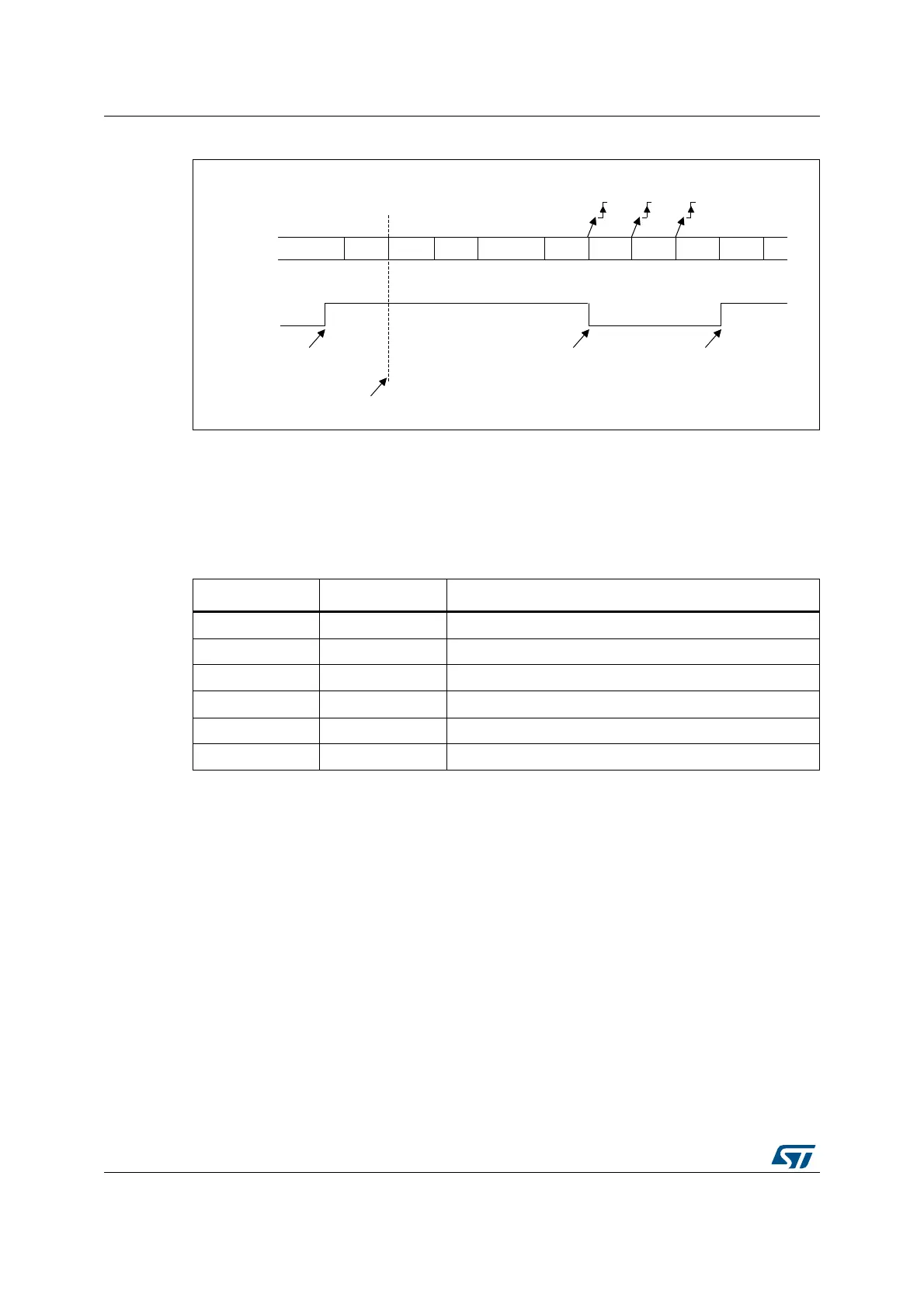Low-power universal asynchronous receiver transmitter (LPUART) RM0440
1698/2126 RM0440 Rev 4
Figure 563. Mute mode using address mark detection
38.4.10 LPUART parity control
Parity control (generation of parity bit in transmission and parity checking in reception) can
be enabled by setting the PCE bit in the LPUART_CR1 register. Depending on the frame
length defined by the M bits, the possible LPUART frame formats are as listed in Table 354.
Even parity
The parity bit is calculated to obtain an even number of “1s” inside the frame which is made
of the 6, 7 or 8 LSB bits (depending on M bit values) and the parity bit.
As an example, if data=00110101, and 4 bits are set, then the parity bit is equal to 0 if even
parity is selected (PS bit in LPUART_CR1 = 0).
Odd parity
The parity bit is calculated to obtain an odd number of “1s” inside the frame made of the 6, 7
or 8 LSB bits (depending on M bit values) and the parity bit.
As an example, if data=00110101 and 4 bits set, then the parity bit is equal to 1 if odd parity
is selected (PS bit in LPUART_CR1 = 1).
MSv31888V1
IDLE Addr=0 Data 1 Data 2 IDLE Addr=1 Data 3 Data 4 Addr=2 Data 5
In this example, the current address of the receiver is 1
(programmed in the LUART_CR2 register)
RXNE
Non-matching addressMatching address
Non-matching address
MMRQ written to 1
(RXNE was cleared)
RWU
RX
Mute mode Mute modeNormal mode
RXNE RXNE
Table 354: LPUART frame formats
M bits PCE bit LPUART frame
(1)
1. Legends: SB: start bit, STB: stop bit, PB: parity bit.
2. In the data register, the PB is always taking the MSB position (8th or 7th, depending on the M bit value).
00 0 | SB | 8 bit data | STB |
00 1 | SB | 7-bit data | PB | STB |
01 0 | SB | 9-bit data | STB |
01 1 | SB | 8-bit data PB | STB |
10 0 | SB | 7bit data | STB |
10 1 | SB | 6-bit data | PB | STB |

